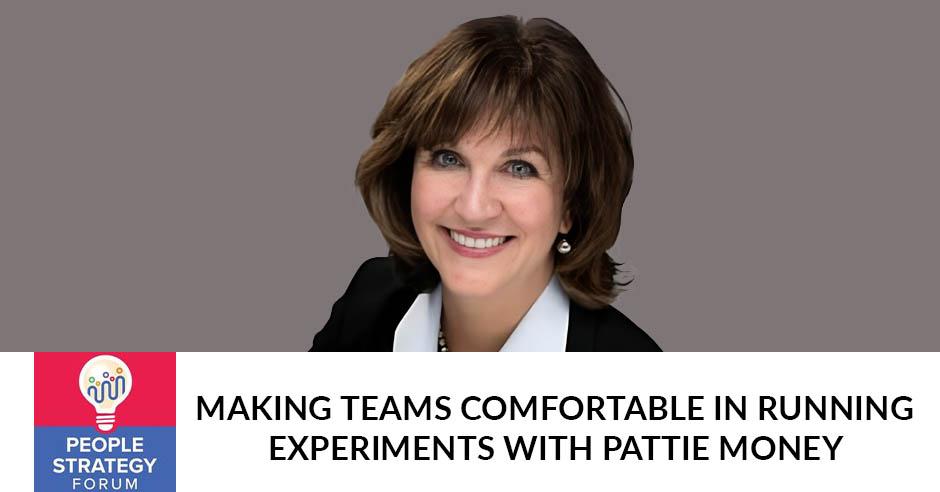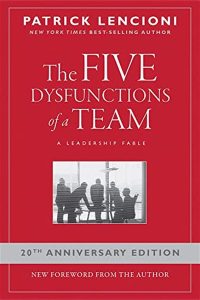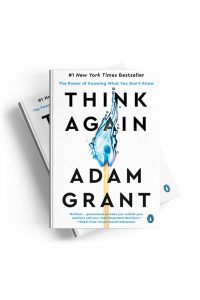Making Teams Comfortable In Running Experiments With Pattie Money

If a team sticks to their original strategies and refuses to evolve, they will be left behind and fail to grow. That’s why running experiments must be part of team building if they want to achieve success. Joining the People Strategy Forum panel is Pattie Money who explores the importance of testing and playing in the sandbox to assure quality results. She talks about how assumptions and theories are effective elements in shaping a learning culture that promote open-mindedness, healthy competition, and inclusivity. Pattie also explains how leaders can improve velocity and how technological advancements like AI impact experimentation within the team.
—
Making Teams Comfortable In Running Experiments With Pattie Money
Our topic is about getting people teams more comfortable running experiments. We are so glad to have our expert contributor Pattie Money back with us. She is a dear friend, a colleague, and somebody that we love partnering with. Thank you Pattie for joining us.
It’s so good to be with you.
As many of you guys know, the People Strategy Forum is sponsored by CompTeam and TMA USA. We started before the pandemic started. We’ve been running this forum for over three years now, which is really exciting, and hundreds of editions of live forums. For every topic each week, our whole goal is to find creative and out-of-the-box ways to engage, energize, and elevate employees, companies, and the workforce experience. That’s our whole goal of being here. I’d like to quickly introduce some of our panel members.
Sam Reeve is the Founder and CEO of CompTeam. His whole passion came from working with other big-box consulting firms that basically gave the same solution to every client that they ever worked with. He knew there had to be a better way and then there could be a way to offer a custom personalized solution to companies who didn’t need a big solution. They may be only needed a few things or other companies needed the full thing. That’s where his passion grew and that’s how CompTeam came to be. Thank you, Sam, for starting CompTeam. Also, we do have a great example of how to engage, energize, and elevate the workforce through your example alone. It’s great to have you here.
Char Miller is our people strategist. Her motto is “HR with a heart.” Everything she does, she leads from the heart in a very people-centric way. In all of her endeavors, she has a lot of experience in the healthcare industry and the C-Suite as a human resources professional and entrepreneur. She brings all those different perspectives.
Joining us all the way from India is Sumit Singla. He’s a people strategist with CompTeam and TMA USA. He has a wide background working with some of these larger consulting firms. Now he’s come to join our team as well to be able to offer these custom solutions to our fast-growing small to mid-size businesses that we work with and to make an impact in their everyday life. Thanks for joining us, Sumit. I’m Wendy Graham. I’m also excited to be here. I’m going to be tech-hosting. I’d like to introduce Pattie Money.
She’s the Owner and CEO of Pinnacle Leadership. She has a highly accomplished career, was in the corporate world, and left to become a consultant. She had such a long history in the corporate world. She has a Master’s in HR Development from Villanova. She has the chops and the experience as a leader but also has that school background to back up all of the programs and plans that she puts in place. She is especially interested in helping executives, doing executive coaching leadership, and helping people teams get better. Welcome, Pattie. It’s such a joy to have you here.
It’s good to be here. I love this team.
I know. Me too.
It’s always fun to have a conversation around fun topics.
For sure. We’re going to talk a lot about experimentation in HR with programs and rolling out programs in a unique and meaningful way. Before we get there, Pattie, I know that you have such a compelling story and you’ve made such an impact on the industry overall. I’d like to share with our audience a little bit about your journey, how you started out in this field, and so forth. Can you fill us in?
Like most HR professionals, I didn’t start out to be an HR professional. I fell into the field. The minute I landed in the people profession, I fell in love and I said, “This is my life’s work.” I thought I was going to be an ad executive. My undergrad was in marketing. I fell in love with it primarily because I believe that our job is to enable people’s success. That’s what we’re all about. When people are successful, businesses are successful. As HR professionals, how do we create environments that lead to business and individual success? When I first fell into HR, we were the principal’s office, the rule makers, and the ones that were there to tell people what they could and couldn’t do, and all that good stuff.
I hated that. I worked in manufacturing and healthcare. It’s very rules and rigid in terms of how you actually have to get things done for some good reasons too, and then I fell into tech. I spent the last twenty years working in tech. That was where I found the freedom and the flexibility to do some of the things that we’re going to talk about, to not be as focused on the rules, and be more focused on how we enable cultures where people can do their best work and have a good time. Life is short and I’m a believer that we should be having some fun, and be able to go into work environments that support us as whole human beings. That’s where I like spending my time. I’m like many of you. I didn’t start out to be a people professional, but I’m so glad that that’s where I landed.
One of the things that I know you excel in is you’re a leader of teams and you create passion in those teams. Before we dive into this topic in detail, I’m wondering if you can share a few key points that you think are important for leaders to develop those teams and get that sense of belonging and cohesion. We’re about to talk about experimentation. To be able to come up with different ideas, some of that may fail and some of that may be successful to roll out the most important programs. We have to have an element of psychological safety to make it okay that we are expecting that some things might not be perfect the first right out of the gate. How do you create that sense of vulnerability in a team as a leader and so forth to be successful?
I love all of Lencioni’s work. When you think about The Five Dysfunctions of a Team, the very foundation is trust. If you trust each other, have each other’s back, can speak the truth to one another, and hold each other accountable in ways that are healthy and good, then teams thrive. Also, not allowing dysfunction to flourish. Many times, people are being a little weird over here versus addressing it head-on and saying, “We’re not going to do this.” If you’re going to talk about a team member behind their back, you’re not going to be on the team. If you’re not going to be able to come and have the conversation that we need to have, then it’s going to be a problem.
It’s creating those team norms that allow people to feel safe that it’s going to be okay and they’re going to be supported. The other thing that’s critical for strong teams is a sense of positivity. The fact that this is good, we’re going to have some fun with this. Even if it doesn’t do everything we want it to do, we’re going to do some good work. Our mindset makes such a big difference in how we approach it. We can approach it from the fact that if it’s not perfect, it’s terrible, or we can approach it from the fact that’s like, “We’re going to make progress. We’re going to do some good stuff and learn a lot along the way as well.” Positivity is important for teams.
All of you have worked around teams that had a very negative vibe. That does not lead to good work, but trust is the real foundation of everything. If we trust one another, we can be vulnerable. We can say, “This is not going to work.” You can challenge each other directly. You can say, “Pattie, you’re smoking dope. I don’t know what you’re talking about here.” There are all kinds of things that can happen when you trust one another. You can speak truth to power if you trust each other. If you trust the executive team, you can tell them that the emperor is not wearing any clothes.
You can say the things that are important for people to hear and know because you trust that it’s safe. You trust that they know where you’re coming from too. When you know someone, then you know they’re coming from a place of care and support. They’re on your side. Those are the biggies. I wish I could say I’d always done it well. I didn’t. I learned a lot along the way and I’ve led some amazing teams. I’m super proud of the people that have touched my life on my journey and made me a better leader because of it too.
Pattie, listening to you reminded me of the best thing I ever heard from my leader. It was when I started a new role and he said to me, “You’re never going to do anything wrong. There might be an opportunity for us to talk about an opportunity for improvement, but you’re never going to be in trouble with me.” Right out of the gate, he was saying, “I trust you to do these experiments and try something new.” I was in a new role that had never been there with a new product and program. He was saying, “I trust you and we might have to have a conversation about how to do things better, but you’re never going to be wrong. You’re never going to be in trouble.”
That was the most freeing thing I ever heard from a leader and was one of the roles that I feel the proudest of because I felt free to do what I knew I needed to get done, have fun, experiment, play, and bring in a lot of things that I had never even seen done before. We did it and it ended up being a very effective launch of a new product, and support of that product and everything. Anyways, that’s what came up when I heard you speaking. Thanks for that reminder. That was such a great memory. What a cool thing that he had the wherewithal to say that, especially to me. That made a big difference.
You’ve stroked my cord there, Wendy, because I also was hired in an experimental position. It was the regional director of talent management and organizational effectiveness for over 9,000 employees. It was very difficult because it was a system experiment, but I didn’t feel the freedom that you had. I didn’t have a VP that said, “You’re not going to make mistakes.” Everything that came out of my mouth, every system program, and every single thing that I had drafted, I constantly felt judged.
I lived on a different spectrum of that. Pattie, what do you think? In my opinion, there are many of us talent management, individuals out there, organizational effectiveness, learning development leaders, constantly trying to put out new programs, but yet constantly feeling judged and not having the freedom that Wendy described.
It’s interesting, Wendy. We can fail and screw up. Things can happen. My motto is to fail fast. It’s okay. Let’s try something. If we think it doesn’t work, great. Let’s own it. What did we learn from it? How do we move on? Perfection is our greatest enemy. People programs fall into this trap so much because we feel the weight of 9,000 employees that are going to be dependent on you doing this or that, etc. That sense of I can roll out a program and it not work is daunting and can hold us back and keep us working on things that we shouldn’t be working on. Some things we should let go of like, “That’s not what we need right now. We need to be doing something different.”
Learn how to fail fast. If something doesn’t work, just own it and move on. Share on XSam and I were talking about being in this volatile world. This one that’s very ambiguous for us. It’s incredibly complex. All of these things are things that come into play that if we get too entrenched, we’re going to miss so many opportunities. We should be able to fail and feel okay about it. Some people don’t like the word fail. I don’t mind the word. It doesn’t bug me because I’m going to fail. There are things I’m going to try. It’s not going to work, but great. I’m not going to do that again. I’ll try something else. Giving people the freedom to say it doesn’t have to be perfect.
Sheryl Sandberg had a quote that I love. It said, “Done is better than perfect.” It’s something like that. I may not have it exactly right, but done is better than perfect. That’s so true because so much of what we do does not need perfection. It needs to get out there and then we need to iterate on it. We need to think about what needs to be tweaked. What would happen if I did this? What changes do we need to make? Those are the things that are going to make it better. We wait until we think it’s perfect because we’re afraid we’re going to fail. That leads us to a lot of anxiety, stress, and pressure that we don’t need.

Running Experiments: When you wait until everything’s perfect, you will only experience anxiety, stress, and pressure that you don’t need.
It reminds me of a similar saying, “Progress, not perfection.” It’s making steps forward. It’s better than not taking those steps.
None of us are going to be perfect. One of my favorite quotes that I got when I was doing coaching training was, “It’s not about perfection. It’s about the speed of recovery.” I was like, “It’s so true.” When we screw up. How quickly do we recognize it? How quickly can we pivot and say, “That’s not working?” What are we going to do differently? How do I make that better? That’s where great learning occurs.
It doesn’t occur when we get mired in anything. There’s a lot to it and a lot of pressure on people leaders. It’s not just pressure from the leaders that are leading us. It’s the internal pressure that we feel because we know these are people’s careers and lives. The ones of us that take this so seriously to heart put a ton of pressure on ourselves. We don’t even have to have it from anybody else. We’ve got that weight on our shoulders in a big way because we care.
Sumit, what do you have for us?
It has been a lot of stuff to think about. Although I hate to draw parallels between parenting and leadership skills, I have a five-year-old. I’ve learned a lot from her about the idea of trust and psychological safety because there are no filters with a child. Whether they have a positive reaction to what you’re saying or doing, or a negative one, it’ll come out instantly. I’ve realized that the temptation is great when she makes a mistake to quickly jump in and fix it, or to admonish her if she has destroyed some favorite piece of stationery, or ended up scribbling in a signed copy of a book that you treasure and stuff.
Resisting that temptation is what takes a lot of effort. That’s why I’m relating it to the idea of The Five Dysfunctions where we struggle to create that psychological safety because of the idea of jumping in and either fixing somebody’s mistakes without ill intent. The idea may not always be to berate somebody or to call out that you’ve got no idea what you’re doing. In public, if you step in and start fixing what somebody else has done, it might make them feel incompetent. Even without intending to, you might actually end up creating an unsafe atmosphere. Leaders need to steer away from being overprotective and give people a chance to fail and fail fast as you said.
You’re balancing all of that too with the need to give people meaningful feedback. That’s a whole other topic. We could go down a rabbit hole on that, but how do you give feedback? People need to know what’s good and what’s not good. How do you deal with that? How do you do it in a way that gives them confidence that they can do it, and that you’re going to help them on their journey? We need that too. There’s a lot of balancing and juggling that we’re doing as leaders, whether we’re leading a people team or any other function in the organization.
Since you were talking about Lencioni, the other book I was thinking of was Getting Naked. Only if The Five Dysfunctions are absent or if you address them, people will have the confidence to be vulnerable in front of clients or customers that they’re serving. Otherwise, the entire organization falls flat.
That vulnerability is so hard. I also think it’s super hard. I don’t want to go off on another topic, but from a diverse perspective, women are trained that if they show vulnerability, then they are going to be seen as weak and things like that. If you come on too strong, you’re balanced. A lot of people that are underrepresented have trouble with that vulnerability too. Overcoming some of those norms is always tough. There are so many tangents.
We did have some comments that I wanted to be sure to bring in too. I was curious and I asked the folks that are live with us if they had someone done something for them that created trust. Someone mentioned that they’ve been in the workforce a long time and they’ve been burned a lot. For them, trust has to be earned. They’re much more cautious now. That’s important because it’s like, “We’re going to get burned. How do we still come with a fresh open heart in a new scenario?” This person also mentioned that they encourage failure as a positive. It’s tagging onto what you’ve mentioned. I just wanted to bring that forward. Thank you. I’ll let you get back to it.
Thank you for those comments.
One thing that I wanted to bring up is something that Wendy said earlier, which was play. We’re talking about iterating for success and experimenting in HR. Some of us might be inconceivable to think back to our youngest days when we were on the playground. However, when we observe children, as Sumit was mentioning, it’s so easy for them to go out, find a playmate out in the grass, start a conversation, start going at it, and have fun. As we become adults, that seems to become harder and harder maybe because we’ve been hurt or burnt in the past and so forth.
Establishing that same mindset for play is harder. I want to bring up play as a way that we can iterate. As we know, even nowadays as when we’re playing video games, we see a challenge. We come up to that challenge and we fail, and then maybe we have to start back at the beginning. We come in a different way, we fail again, and we start back at the beginning. We keep doing it and iterating through that play and finding new angles until we’re successful. What are the fundamentals that we need to think about, Pattie, when we’re taking this approach of iterative success in business?
There are a couple of things I shared with Wendy and you when we were talking about this topic. I read a book, Adam Grant’s Think Again, and I love this book. It reinforced everything I believe and the things that I’ve thought were critical for teams. Iterate fast and rethink your assumptions. What am I thinking that may not be true? What are my belief systems and my instincts, and how am I testing and thinking about them? How do I deal with this mindset that, “It’s okay if I’m wrong? I can learn and grow. I can find a playmate that will help me be a thought partner and challenge my thinking.” Instead of that challenge being a problem, it’s a gift.
When somebody is going to say and go, “Why aren’t you thinking that, Pattie? Where’s that coming from? What’s it based on?” It’s going to make me stop and think and think again. How do I make certain that I’m coming from a place? We all fall into our habits too. The other thing with people teams in particular is we don’t normally run experiments. We create programs that are fully launched. We work, get this program, have this launch, train everybody, etc. There’s a lot of money and investment that’s gone into that by the time you’ve launched. How would we think about iterating on that as we go and learning so that when we get to maybe even it is the real launch, you’ve run enough experiments?
You know that what you’re going to do is going to be meaningful and have an impact. If we wait and we launch the full-blown program, even if we’ve tested some things along the way, we’re not really working in that experimental mode. We’re not saying, “Let’s test a couple of different things and see what works best.” One example that you and I talked about was let’s say you’re creating a new performance management system. We all sit and think about all of the things that need to go into this. What if we ran small subgroups with a few key questions and say, “Which are the questions that got the most positive results from the people that got feedback on those things that accelerated their performance? What are those things?
If you only wait until you have something perfect, you cannot work in experimental mode and try a couple of things to see what works best. Share on XHow do we get more granular about stuff so that what we put together is based on some real experiments that cost us to think differently and to engage other people? I love the idea of that being played. It’s like, “Let’s play around with this. Let’s see what that does.” That also takes some of the weight off. We feel the heavy weight of whatever we do has to be absolutely right. It’s like, “Let’s play around with some ideas. Let’s see what that might look like. Let’s test a few theories.” Most of the time, this is true for most of us as mature professionals. We’ve got a lot of knowledge and information. We go in pretty sure and we’re not always taking the time to rethink what assumptions are we making and what we are doing there.
That’s where I would encourage us to step back. For whatever program you are designing and running, what assumptions do you have? What’s your belief? What do you believe the outcome is going to be? How do you know that you’re going to get there? What would you need to know in order to know that that’s what it’s going to deliver? What experiment would you need to run? How would you make them happen? That’s a mindset.
Think about engineering teams adopting a more agile mindset versus they’re iterating all the time. They run a scrum, they do their thing, and then they iterate on that. It’s not like they’re trying to get the whole product out at one time. They’re running these short scrums and they’re learning as they grow the agile mindset. As people professionals, we need to be doing a whole lot more of that. Did that answer your question?
It did. The big piece of how I use this in my environment is it often comes in sales plan design and compensation. A lot of new leaders will reach out to me and say, “We’ve never put together a sales plan before.” I’ll say, “What are you trying to measure? What are you trying to be successful on?” He goes, “All X, Y, and Z.” “How do you measure that with these metrics? Have you ever measured those metrics before in real life?” “No, we haven’t.”
This is another thing towards the plate. Let’s put that in a sandbox. Before we roll out the actual program, let’s test these metrics to see if you can measure them successfully, timely, accurately, and so forth. Of course, the consequence is this is going to impact somebody’s pay. We need to make sure that this is a valid model before we go out to put this in place. That testing is quite important to ensure that we have a successful product in the end.
Even the assumptions about what’s going to motivate people. When you’re thinking about comp plans, we have a lot of assumptions that we have. How do you test those assumptions and see if those are really the motivators and the real things that are going to get people’s performance elevated to a higher level, which is what you’re trying to do? With your comp plan, you want it to drive performance and focus and all of those things. How do you understand what those motivations are and not go based on your assumptions, but get some real information?
What do you think, Char?
I am looking at the commentary here. As we’re talking about the sandbox and playing in the sandbox, it’s very vital to assure that there’s inclusivity of all those in the sandbox. Daniel brought up that he was burned many times in his career. He’s a Baby Boomer. I replied, “I’m an X-er as well.” When we talk about inclusivity, and Sumit and I have a lot of conversations about this as well, this topic is going to be very vital even in the sandbox. I do remember when I was five years old and I was at the playground and this bully came up to me. The reason I remember this day very well is because it was the day when Star Wars came out and my parents took me to Star Wars. It was the first Star Wars.
That was the same day I was being choked in the sandbox. I remember it was very influential to me because I was thinking even at five or whatever age I was, I was like, “People don’t play well in the sandbox. Now I’m going to go watch people shooting each other and blowing up starships, that’s interesting.” It had a major impact on me. Pattie, for you, leading that little story, how do we assure that everybody is playing nice? Also, make sure that being inclusive for every people on the team is being able to play wealth to each other and not be excluded because of age or all the other -isms. How do we make sure that we are inclusive to help make sure everyone has a voice and does not get choked in the sandbox?
That’s a whole other conversation that can take us down a very different path. I will say when it comes to tying this into people being able to play, run experiments, or do that, it’s the idea that every voice matters. The different voices allow you to rethink your own ideas. Those different voices come from a different lens, somebody that comes from a different background, age group, ethnicity, or sexual orientation. It’s going to give you a different lens. They can run experiments based on their knowledge, background, and experience which is going to add to the knowledge of what’s going to work for your workforce. Our workforces are very diverse places.
Ensuring, first of all, that you have a diverse team so that those voices and those lenses can come to the table, and ensuring that you are giving space for those ideas and challenges to you, especially if you’re a person in power. How do you make it safe for somebody that is underrepresented to challenge you directly to be able to say, “I’m not sure that’s a good idea. What about if we did X? I’ve been thinking about something differently.”
Things that that you can give people space to bring their ideas forward, give them space to challenge, and for you as a leader to be okay with that. The minute somebody challenges you and you respond defensively, you shut it down, or do something like that, the experiment is dead. We have to respond as leaders from a place that says, “That’s really interesting. Tell me more. Let’s think about it.”
If somebody challenges your idea and you respond defensively, you are killing the experimental approach within the team. As a leader, you have to respond from a place of interest and curiosity. Share on XI absolutely agree. When we’re experimenting and as we’re coming up with new ideas, it’s very vital that if a person has worked with a company for 35 years, you also appreciate that every day, we are all learning. Even if the person has worked there for 35 years, they’re also learning the new iPhones and all the new AI and technology. The advantage sometimes of those coming right out of college is that they didn’t have to know the Dewey decimal. We didn’t have to look up. We used real typewriters.
Eventually, we had to learn what computers were, and then we had to figure out what these new MacBooks are. I can’t even use a MacBook, but we’re all learning. Bringing in someone fresh out of college or a new grad, plus looking at our long-term employees and everybody in between is vital to realize all of us are learning constantly. All of us bring value, and we have to bring to this culture that just because I may have gone to college back in 1968, it doesn’t matter if I went to college in 2022.
I agree with everything that you’re saying, Char. I will also say that we, as leaders, can ensure that people stay fresh as they mature and that you create a learning mindset on your team because people can get entrenched. They can get stuck. As leaders, if we encourage an environment, we’re going to experiment and learn and we’re going to be a learning culture. We’re not going to rest on our laurels. We’re not going to keep doing the same thing. We’re going to challenge each other. It’s super important for all of us as we age through our careers to stay fresh. Timothy Leary had this quote that I loved, and I’ll probably get it wrong, but it’s something like, “You’re only as young as the last time you changed your mind.” It’s something along those lines.
Your ability to think about things differently and to put on a different hat is so crucial to the team staying fresh, creative, cutting edge, or whatever it is that you need to do. I’m just saying that we create that environment for our teams too. It’s important for us as leaders to think about how we create that so that it is a learning environment. We’re not shutting that down and keeping people entrenched in certain ways of doing things. The minute we do that, we’re losing that ability to rethink and get better. That’s a point of rethinking. It’s to get better and to challenge ourselves. The more we challenge ourselves, the better we are. Sam?
I agree. Let’s talk about a new fresh approach that is unfolding right now as we speak. Sam Altman is the CEO of OpenAI. Many of us are familiar with ChatGPT which has been released. This is one of the world’s first exposure to a model interacting with AI on a real-time basis.
It’s a very disruptive technology.
That’s right. Typically, when we roll out programs as HR and so forth in companies, we think about, “We’re going to roll this out to a small little beta group and they’re going to test it.” Sam didn’t do that. Sam Altman released this AI model to the world. It’s a very raw form at the beginning and people interacted with it. He’s gotten a lot of criticism for that. It also allowed that model to gain momentum and usability and learn very quickly. I think there was a big risk there. What do you think about that approach of releasing a program, Pattie?
First of all, I love what he did because he had the benefit of getting massive amounts of data from people using it and finding out what’s working and what’s not. From a people program perspective, we can run our small experiments but we can also start with a baseline and do it more broadly because different groups operate differently too. Especially if you’re in a larger organization, one size doesn’t always fit all. You could run an experiment with one group, and if you’re not running it with a broader sampling, you can miss a lot of things that may be critical. He got a ton of information by doing that. I also think it created a lot of concerns about what this could do because it’s such a disruptive technology.
I don’t think we have many technologies that are like that. We see a few of these in our lifetime that change significantly how we work, like something that’s truly disruptive. COVID was truly disruptive to how we work. It caused us to run a lot of experiments that we weren’t planning on running, and we had to do it fast. How we use our phones changed so dramatically. You and I talked about the ability to rethink your assumptions about stuff. We talked about the example with Blackberry. Blackberry said, “People want to use their phones for phones.” They didn’t change. They had well over 50% of the market and then less than a couple of years later, they were down to 1% because their assumption about what people wanted, needed, and desired stayed mired in one way of thinking.
That’s a disruptive technology that happened. AI is doing the same thing to us. It’s going to challenge all of our assumptions about how work can be done. The more we can learn about it, the better off we’re going to be able to use that technology. I don’t know what it’s going to mean and I think there’s going to be a lot of controls that have to come into play here. That’s a hot topic for most of us HR professionals as we think about what it means to the future of work.

Running Experiments: AI challenges our assumptions about how work can be done. The more we can learn about it, the better off we can use this technology.
I have to say I love my Blackberry. Do you know why I love my Blackberry? It is because I could type on that thing so fast. I had hundreds of leaders questioning this employee issue. I used to wear it on my hip. Remember those days? We also used to have beepers and all the other things. Some of those old technologies, it’s pretty sad to see that they died off. Smartphones are great but they’re not as easy to use as some of those old technologies. It’s too bad that some of those old ones died off. It’s like Kodak. It could not keep up with the changes either. Go ahead, Sam.
I would say I disagree. I think that they are easier but that’s the reason why they succeed. That’s a good point, Char. Sometimes as people, we love that we master something. I watch my wife and my kids. They’re texting and going on their phones. I’m almost doing this to try to deliver a message. It’s hunt and peck. It’s very difficult to me to have that dexterity. I speak into my phone a lot to type, but I understand that when we think about our demographic and how important it is to roll out programs effectively. We have to think about our user base. Who’s using it? Who’s interacting with it? Do they have this particular category where they enjoy some of those previous features? How can we move the needle? There’s a lot of balancing there. Good point, Char.
I agree and I would say we also have to help people be adaptive to the new changes. We need to let them experiment and find ways to make new technology work for them and to invest in that as well. If not, what does happen is some people can get left behind. As people leaders, we want to bring people along into the new technologies and the new things that are going to keep them fresh, relevant, and capable as workforces change. I liked having little raised letters that I can type on versus flat letters. I get it, but I’m pretty fast now. I’ve worked on it. It took me a while but I will never match my nieces. I can’t do that, but I can keep up.
That’s the thing that when we think about staying fresh, we have to rethink our own assumptions about, “Can I not use this? What could I do differently? How would I learn to use this in a way that’s going to be effective? How do I make certain that I’m embracing change as it occurs too?” That is truly the mindset. Adam Grant’s book brings us back there. We talked about he thinks we should be in scientist mode where we challenge ourselves, think about our assumptions, or think, “Am I going to hate that? Is it going to be bad? Can I learn a way to make this work for me?”
It’s not that all the things in the past were bad, but the world is moving and it moves very fast. As leaders, we need to help people learn how to adapt to those changes as well. Think like a scientist. Things don’t stay the same so how am I going to learn, grow, and be better with the new things that are coming my way? How do people teams do that too? As people leaders, how do we embrace those things? Think about when design thinking became big on the product side.
Not all things in the past were bad, but the world is moving very fast. Leaders need to help people adapt and think like a scientist. Share on XVery early on, I was like, “Why are we not thinking that way from people’s side? Why are we not taking a design thinking mindset as we look at our programs and what our workforce needs, etc.” We were slow to adopt. A lot of people teams are doing that a lot more now, but we are pretty slow. How do we improve our velocity and challenge our own assumptions around those things and be willing to run some of those experiments so that we can get better results for our organizations and our people? I do believe that we have to do that. We have to challenge ourselves.
Pattie, what came up for me was I used to be a trainer for the Price Bridgette Change Essentials Program, and then also for the radically new habits in a radically changing world or something like that. Both of those programs delivered some pretty shocking messages to their participants, and it was so necessary. I even keep hearing people say, “I can’t wait to get back to how we were pre-pandemic.” I’m like, “It’s been three years.” The fact is that people need to hear the message that the only constant is change. Things are not going to go back to the way they were and they’re not going to slow down. They are only going to get faster. That in and of itself, even though I know we’ve all heard that, I’m not saying anything new, is still so hard for people.
It’s being able to have those frank conversations with your people and help them through change. Daniel said, “Pre-pandemic is the past.” The other thing that came up that’s a little bit of a side point, but I want to mention it because I’m so passionate about it. For example, we use the TMA tool, and there are many other scientifically validated tools out there. That happen to be the ones that we use with CompTeam. I’m pretty excited even with my past with other systems, it is that we are looking at people’s talents and passions. One of the things we can measure is people’s ability to embrace change.
I’m advocating for if you are working with a team where you’re going to say, “Let’s start experimenting. Let’s do an A/B campaign. Don’t worry if it fails and all of this.” It’s because if we were to know who the team was that we were working with, and I were to know that this particular member of the team, maybe they have a talent for wanting things to be right and not dealing well with failure. What if I also know that that person has a hard time with change, other drives that we can measure, and other talents? They are process-oriented versus goal-oriented.
All those things might be good information for me to have when I roll out this idea of experimentation because I might know that one particular person if they are a perfectionist, I might need to talk with them a little bit more about how they’re feeling and this idea of making some mistakes. That can bring up anxieties in them and have them act in a way that is counterproductive. I wanted to advocate for maybe using a psychometric test when you are doing this because it can help you support your people in the way that they need. This idea of experimentation might be tough for some people. Some people are change agents and some people aren’t. Eventually, they have to come along or become a dinosaur and go extinct. How do we help them?
What you’re talking about, especially if you are not in an environment where that is the norm where you expect to run experiments and iterate. Good enough is good enough. Let’s get it done, and then we can iterate on it. If you’re not from that environment and you’re working in a perfectionist mode, that’s a cultural shift. That requires time, energy, investment, and training. It’s not something that you can go, “Let’s go run an experiment.” It won’t happen that way. There are some things that are fairly easy to start doing and have a common language for people to think about how we do this. How do we move out of any thinking that is mired in the past or like, “That’s how we do things. That’s who we are.”
Even when you think about people, I hate it when somebody says, “That’s how Pattie is.” I can be a lot of different things. Don’t put me in a box and let’s not put all of our people in a box either. All of us with the right motivators have the ability to grow and change. We have to bring people along on that journey. We have to care enough about helping each member of the team be on the same page. If we’re going to be a team that’s going to take some risk and not worry about failing, how are we going to do that? How are we going to support it? What are the team norms that will be necessary for that?
A great side story. I started leading a new team and one of the first things I do with a team is, “Let’s decide on our behavioral norms. Let’s set our mission and our vision.” What are the behavioral norms that we think are going to be really important to support the culture and the work that we want to do? Also, to make work fun and meaningful. I was at this offsite with this team and they started talking about they did not challenge at all. There was some history there that ended up coming out that they had felt before like if you challenged the leader directly, you get in trouble. It was a problem. It’s like, “You were in the doghouse.”
We adopted a team norm that said, “We’re going to be troublemakers.” Being a troublemaker is a good thing. We took what was a problem, flipped it, and said, “This is a positive and we’re going to practice being troublemakers.” We would have somebody take the troublemaker role in a meeting and say, “Play devil’s advocate. Tell us what we might not be thinking about. How do we challenge ourselves in those ways?” You have to have some real reinforcing mechanisms for your team if you want to move the culture from one way of doing things to another way of doing things. Sometimes, we speak the words and think everybody is going to come along. What are you going to put in place that is going to reinforce that, make it safe, and make it the norm so that everybody is like, “It’s okay?”
I remember we were doing it pretty well and we had a new person join the team, and they were freaked out because we had some challenging conversations in the meeting. They were like, “Is this okay?” That’s a great conversation. Wendy, I hear you and I agree with you 100%. What you’re talking about is a real change management mindset and bringing people along so that they can embrace the idea that it’s going to be safe to do it. They will learn and grow what’s in it for them. Why would they want to do that? You’re going to get better. You’re going to learn and be more valuable to the organization.
You have to connect people to the why behind what it is that you’re doing. For me, when I think about iteration and experimentation on the people team, it’s so that we can keep up with the pace and the velocity that our organizations need us to move at. We cannot be slow. We cannot take a year to roll out a program. We have got to. The world is moving way too fast.
As people leaders, we have to improve our velocity. The only way we’re going to do that is by getting things done, iterating, making them better, experimenting along the way, and learning. We’re not going to do it any other way. We also have to be okay with people challenging us. We have to be okay with people saying, “Why don’t we try something different? Are you sure?” Also, being willing to listen and embrace that type of thinking because that’s where we start disrupting ourselves as well. Disruption is a good thing. I think a little disruption is super healthy for all of us.

Running Experiments: Leaders have to improve their velocity by getting things done, making them better, and experimenting along the way.
That’s a really good powerful point there, Pattie. Thank you for sharing all this wonderful wisdom with us and our audience. We appreciate it. If some of our audience want to reach out and say, “Pattie, I would to hear more about that topic or how you can help me,” how can they reach out to you?
Reach out to me via LinkedIn or you can share my email broadly with everybody. I’m happy for them. It’s [email protected]. You’re welcome to reach out. I love talking to smart, interesting people leaders, and leaders of all types. If I can help you on your journey, I know it will always be reciprocal because I learn as much from the people that reach out to me as I do from what I share.
Thank you so much and thank you, everyone, for joining us on the show. We’ll see you in the next episode. Take care.
Thank you, Sam.
Important Links
- Pattie Money – LinkedIn
- Pinnacle Leadership
- The Five Dysfunctions of a Team
- Think Again
- [email protected]
About Pattie Money
 A positive, visible, hands-on HR executive with expertise in creating strong, healthy cultures that drive individual and organizational success. Deep experience in scaling organizations, moving late stage start-ups through the IPO process and being part of the executive team successfully leading a publicly traded technology company. Track record of developing and implementing various HR programs and leading the strategic HR function in ways that attract, develop, engage and retain great talent. Extensive experience in talent acquisition, talent management including talent identification and succession planning, total rewards, learning and development, reward & recognition, inclusion and diversity, OD, and leadership development programs.
A positive, visible, hands-on HR executive with expertise in creating strong, healthy cultures that drive individual and organizational success. Deep experience in scaling organizations, moving late stage start-ups through the IPO process and being part of the executive team successfully leading a publicly traded technology company. Track record of developing and implementing various HR programs and leading the strategic HR function in ways that attract, develop, engage and retain great talent. Extensive experience in talent acquisition, talent management including talent identification and succession planning, total rewards, learning and development, reward & recognition, inclusion and diversity, OD, and leadership development programs.






